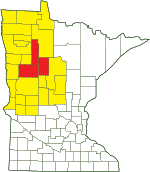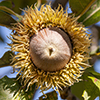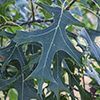Itasca State Park
About • Location • Activities • Ecology
About |
Ownership |
|
Links |
Overview |
Itasca State Park is the jewel of Minnesota’s State Park system. Within it’s borders are the headwaters of the Mississippi River and the former largest red pine in the state. Also within its borders is the Itasca Wilderness Scientific and Natural Area, which was designated a National Natural Landmark in November, 1965. |
History |
|
Management |
|
Comments |
|
Activities |
||||||||||||||||||||||
Hiking Biking Mountain biking Horseback riding Picnicking Camping Backpacking Rock climbing and bouldering Swimming Boating Canoeing Birding Nature photography Geocaching Cross country skiing Skate-skiing Winter hiking Snowshoeing Snowmobiling |
||||||||||||||||||||||
Trails |
||||||||||||||||||||||
|
||||||||||||||||||||||
Hunting and Fishing |
||||||||||||||||||||||
No hunting. The park may hold one or more managed hunts in the fall. In most cases, Minnesota residents do not need a permit to fish in Minnesota State Parks. |
Ecology |
|||||
Ecological Classification |
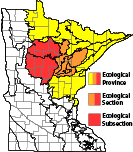 |
||||
| Ecological Province | Laurentian Mixed Forest Province |
||||
| Ecological Section | Northern Minnesota Drift & Lake Plains |
||||
| Ecological Subsection | Chippewa Plains Pine Moraines & Outwash Plains |
||||
| Land Type Association | Alida Till Plain Becida Till Plain Itasca Moraine, Steep Two Inlets Moraine |
||||
Native Plant Communities* |
|||||
There are too many native plant communities in this huge state park to list here. |
|||||
| * Source: The Minnesota Biological Survey, Minnesota Department of Natural Resources, Division of Ecological Resources | |||||
Natural Features |
|||||
|
|||||
Visitor Photos |
||
Share your photo of this destination. |
||
This button not working for you? |
||
Wayne Rasmussen |
||
More Itasca pics from Oct, 2009. We found very little fall color at Itasca in early October, but the hiking is great and the bugs are minimal. One afternoon is not enough time to explore this park. It snowed the next morning so we didn't return, however. |
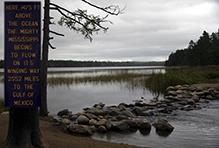 |
|
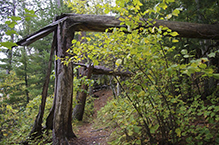 |
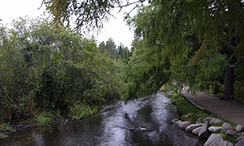 |
|
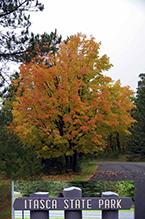 |
||
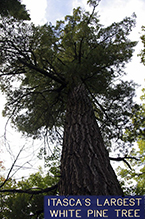 |
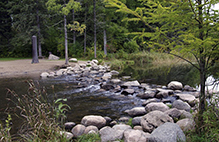 |
|
Itasca State Park - 2013 |
||
|
||
|
||
Itasca State Park - 2013 |
||
Ed Oliveras |
||
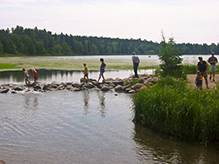 |
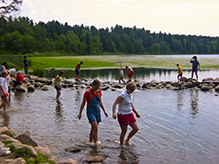 |
|
Mississippi River Headwaters |
||
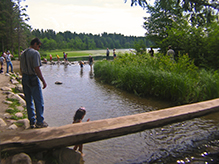 |
||
Mississippi River Headwaters |
||
MinnesotaSeasons.com Photos |
||
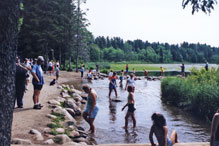 |
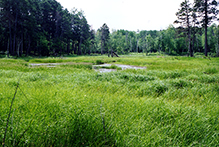 |
|
Mississippi River headwaters |
Wetland | |
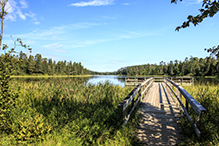 |
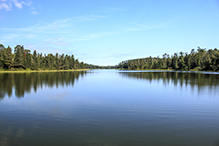 |
|
Lake Itasca – summer |
||
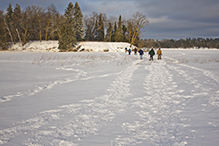 |
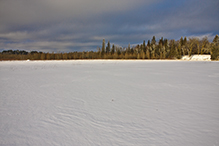 |
|
Lake Itasca – winter |
||
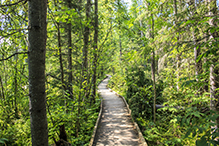 |
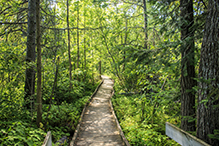 |
|
Dr. Robert’s Trail Loop boardwalk |
||
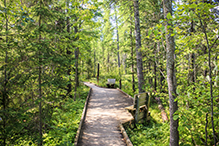 |
||
Dr. Robert’s Trail Loop boardwalk |
||
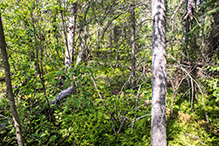 |
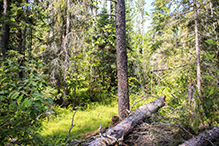 |
|
Extremely Rich Tamarack Swamp |
||
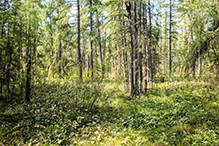 |
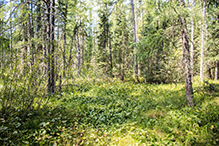 |
|
Extremely Rich Tamarack Swamp |
||

Slideshows |
Itasca State Park |
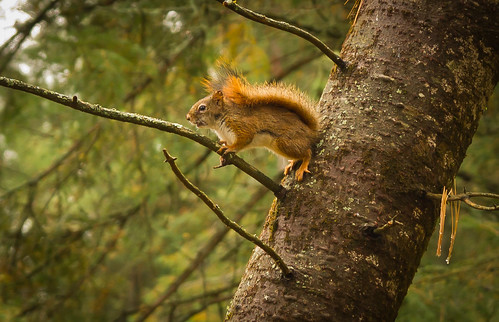
|
About
Arrived on a Thursday night Oct. 11, 2013. A lot of things closed earlier that week. If you camp you just have to register at the Welcome place. The weather wasn't great. Thunderstorms and lightning. Also be wary of hunting within the park at this time if you come. I surprised a guy and his young son on the Desoto trail while I was there. Some tense moments for me... |
Itasca State Park |
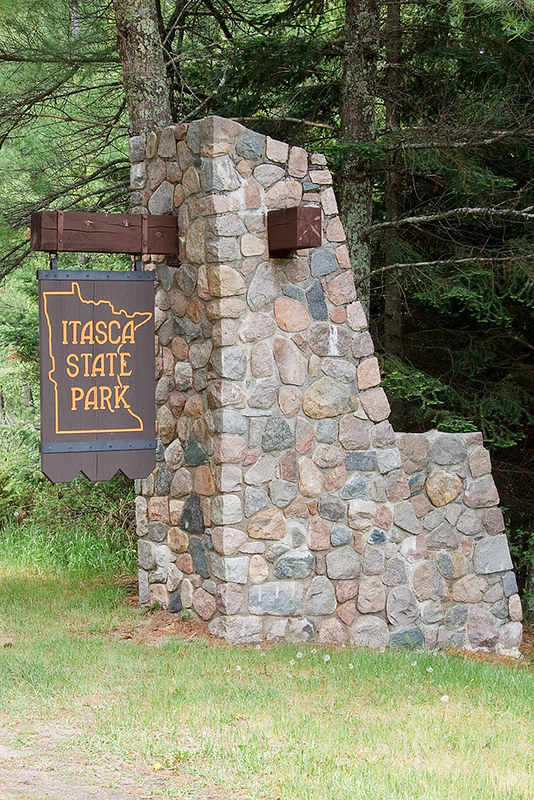
|
About
Itasca State Park |
Itasca State Park, Minnesota |
About
Published on Oct 29, 2013 Favorite Sites: 1, 3, 4, 9, 13, 19, 25, 28, 32, 40, 45, 53, 54, 69, 106, 121, 130, 136, 139, 144, 161, 163, 177, 189, 204, 208, 209, 217, 219, 225, 247 |
Itasca State Park |
About
Uploaded on Jan 3, 2009 Itasca State Park |
Itasca, Minnesota State Park, Douglas Lodge, Historic |
About
Uploaded on Sep 19, 2011 "mikeminnesota" spent 3 days at Itasca State Park where the Mississippi starts. Here are some 500 photos to give you some idea what the park and Douglas Lodge is all about. According to Wikipedia, Itasca State Park, is a state park of Minnesota, United States, and is the headwaters of the Mississippi River. The park spans 32,690 acres of northern Minnesota, and is located about 21 miles (34 km) north of Park Rapids, Minnesota. Itasca State Park was established by the Minnesota Legislature on April 20, 1891, making it the first of Minnesota's state parks and second oldest in the United States, behind Niagara Falls State Park. Henry Schoolcraft explorer determined Lake Itasca as the river's source in 1832. Most of the area has a heavy growth of timber that includes virgin red pine, which is also Minnesota's state tree. It was named as a National Natural Landmark in 1965, and was added to the National Register of Historic Places in 1973. About 500,000 people visit Itasca State Park annually. |
Lake Itascha State Park MN source of the Missippi |
About
Published on Feb 13, 2014 I created this video with the YouTube Slideshow Creator |

Visitor Videos |
||
Share your video of this destination. |
||
This button not working for you? |
||
Wander Without Wifi |
ITASCA STATE PARK - Minnesota |
About
From the headwaters of the Mississippi River to being Minnesota's oldest state park, Itasca has lots of outdoor fun to offer for day visitors and campers alike. This video shows you why it's a favorite destination in Minnesota. |
Other Videos |
||
Itasca State Park |
About
Published on Feb 20, 2013 The headwaters of the Mississippi River near Bemidji, Minnesota have long been a major attraction for summer tourists in Northwestern Minnesota. At Itasca State Park, you can walk on the rocks and over the shallow stream that actually is the headwaters of the great Mississippi River. About the Minnesota Arts and Cultural Heritage Fund Funded in part by the North Dakota Humanities Council, a nonprofit, independent state partner of the National Endowment for the Humanities. Any views, findings, conclusions, or recommendations expressed in the website do not necessarily reflect those of the North Dakota Humanities Council or the National Endowment for the Humanities. |
Itasca State Park Named Top Park - Lakeland News at Ten - September 3, 2012 |
About
Published on Sep 3, 2012 No description available. |
Mississippi Spirit - Itasca State Park |
About
Uploaded on May 6, 2009 Recorded live at the Mississippi headwaters at Lake Itasca State Park, May 1st 2009. An amazing place to see. The video hardly does it justice. The song repeats with a simple 30sec. delay trailing the first. The audio was extracted from the video for editing and remixed back into the video. This was just me sitting on the log bridge at the headwaters playing my Native American flute to the sound of the river headwaters in the background. I hope you enjoy. |
Itasca State Park Storm Damage - Lakeland News at Ten - July 3, 2012 |
About
Published on Jul 3, 2012 No description available. |

Visitor Sightings |
|
Share your sightings or comments about of this destination. |
|
This button not working for you? |
|
Amy Boon |
||
Plants |
||
| downy arrowwood (Viburnum rafinesqueanum) |  |
|
Barnes |
||
Insects and Arachnids |
||
| hunchback bee fly (Lepidophora lutea) |  |
|
Itasca State Park Naturalists |
||
Fungi and Lichens |
||
| Dead Man’s Fingers (Xylaria polymorpha) |  |
|
Lane Keller |
||
Birds |
||
| Ruby-throated Hummingbird (Archilochus colubris) |  |
|
Insects and Arachnids |
||
| red-banded leafhopper (Graphocephala coccinea) |  |
|
Mammals |
||
| eastern cottontail (Sylvilagus floridanus) |  |
|
Sonia Christensen |
||
Fungi and Lichens |
||
| Lilac Fibrecap (Inocybe lilacina) |  |
|
MinnesotaSeasons.com Sightings |
Visits |
7/3/2004 8/7/2016 8/8/2016 7/31/2018 7/29/2019 |
Note: Itasca State Park spans three counties. All of the sightings below were made in Clearwater County. Sightings in the Itasca Wilderness Sanctuary SNA, which is located entirely within Itasca State Park, are listed on the page for that site and are not included here. |
Amphibians |
||
| wood frog (Lithobates sylvaticus) |  |
|
Birds |
||||||||||||
|
||||||||||||
Minnesota Biodiversity Atlas Birds List Great River Birding Trail (Minnesota Trails) eBird Field Checklist (Becker County 11 Road trail access) eBird Field Checklist (Becker County East Access Trail) eBird Field Checklist (Becker County North Country Trailhead SW and road) eBird Field Checklist (Complete) eBird Field Checklist (Merschman Thompson Cutoff Trail) eBird Field Checklist (Schoolcraft Trail) |
||||||||||||
American Crow (Corvus brachyrhynchos) Black-capped Chickadee (Poecile atricapillus) Blue Jay (Cyanocitta cristata) Hairy Woodpecker (Leuconotopicus villosus) Hooded Merganser (Lophodytes cucullatus) Red-breasted Nuthatch (Sitta canadensis) Tundra Swan (Cygnus columbianus) |
||||||||||||
Fishes |
||
Fungi and Lichens |
||
American Starburst Lichen (Imshaugia placorodia) Black Knot (Apiosporina morbosa) Common Greenshield Lichen (Flavoparmelia caperata) Field Dog Lichen (Peltigera rufescens) Hoof Fungus (Fomes fomentarius) Purple Bordered Leaf Spot (Phyllosticta minima) Sunburst Lichen (Xanthoria sp.) Vermilion Waxcap (Hygrocybe miniata) |
||
Insects and Arachnids |
||
|
Carolina grasshopper (Dissosteira carolina) end band net-winged beetle (Calopteron terminale) lupine bug (Megalotomus quinquespinosus) orange sulphur (Colias eurytheme) red nail gall mite (Eriophyes tiliae) Say’s Cicada (Okanagana rimosa) tricolored bumble bee (Bombus ternarius) typical cicadas (family Cicadidae) water strider (family Gerridae) |
||
Mammals |
||||||||
|
||||||||
American red squirrel (Tamiasciurus hudsonicus) |
 |
|||||||
Plants |
||||||||||||
|
||||||||||||
Minnesota Biodiversity Atlas and Minnesota Biological Survey Vegetation Releves Plant List |
||||||||||||
|
Allegheny blackberry (Rubus allegheniensis) Allegheny serviceberry (Amelanchier laevis) alsike clover (Trifolium hybridum) American basswood (Tilia americana var. americana) American black currant (Ribes americanum) American bugleweed (Lycopus americanus) American cow parsnip (Heracleum maximum) American elm (Ulmus americana) American fly honeysuckle (Lonicera canadensis) American highbush cranberry (Viburnum opulus var. americanum) American hophornbeam (Ostrya virginiana var. virginiana) American red raspberry (Rubus idaeus ssp. strigosus) American spikenard (Aralia racemosa ssp. racemosa) American stinging nettle (Urtica gracilis ssp. gracilis) American vetch (Vicia americana) American white waterlily (Nymphaea odorata ssp. tuberosa) arrowleaf tearthumb (Persicaria sagittata) balsam fir (Abies balsamea var. balsamea) beaked hazelnut (Corylus cornuta var. cornuta) Bebb’s willow (Salix bebbiana) bigleaf aster (Eurybia macrophylla) bigtooth aspen (Populus grandidentata) bird’s-foot trefoil (Lotus corniculatus var. corniculatus) black medick (Medicago lupulina) black-seeded plantain (Plantago rugelii var. rugelii) bland sweet cicely (Osmorhiza claytonii) blue giant hyssop (Agastache foeniculum) Blue Ridge carrionflower (Smilax lasioneura) blue skullcap (Scutellaria lateriflora) bluebead lily (Clintonia borealis) bog Labrador tea (Rhododendron groenlandicum) bristly buttercup (Ranunculus hispidus var. nitidus) brittlestem hempnettle (Galeopsis tetrahit) broad-leaved arrowhead (Sagittaria latifolia) broad-leaved cattail (Typha latifolia) buckbean (Menyanthes trifoliata) bulblet fern (Cystopteris bulbifera) bulbet-bearing water hemlock (Cicuta bulbifera) bunchberry (Cornus canadensis) calico aster (Symphyotrichum lateriflorum) Canada anemone (Anemonastrum canadense) Canada mayflower (Maianthemum canadense) Canada thistle (Cirsium arvense) Canadian honewort (Cryptotaenia canadensis) Canadian wild ginger (Asarum canadense) chokecherry (Prunus virginiana var. virginiana) cinnamon fern (Osmundastrum cinnamomeum) common blue violet (Viola sororia) common dandelion (Taraxacum officinale ssp. officinale) common duckweed (Lemna minor) common false Solomon’s seal (Maianthemum racemosum var. racemosum) common plantain (Plantago major) common selfheal (Prunella vulgaris ssp. vulgaris) common tansy (Tanacetum vulgare) common yarrow (Achillea millefolium) crested wood fern (Dryopteris cristata) dark green bulrush (Scirpus atrovirens) downy yellow violet (Viola pubescens) dwarf raspberry (Rubus pubescens) eastern leatherwood (Dirca palustris) early meadow-rue (Thalictrum dioicum) eastern white pine (Pinus strobus) fireweed (Chamaenerion angustifolium ssp. circumvagum) flat-topped aster (Doellingeria umbellata var. pubens) fowl bluegrass (Poa palustris) fragrant bedstraw (Galium triflorum) fringed brome (Bromus ciliatus) giant goldenrod (Solidago gigantea) goldthread (Coptis trifolia) grass-leaved goldenrod (Euthamia graminifolia) great water dock (Rumex britannica) greater duckweed (Spirodela polyrrhiza) green ash (Fraxinus pennsylvanica) ground ivy (Glechoma hederacea) hairy goldenrod (Solidago hispida) hairy-stem gooseberry (Ribes hirtellum) hog peanut (Amphicarpaea bracteata var. bracteata) Indian hemp (Apocynum cannabinum) Indian wild rice (Zizania aquatica var. aquatica) intermediate bellflower (Campanula intercedens) interrupted fern (Claytosmunda claytoniana) Jack-in-the-pulpit (Arisaema triphyllum) Kentucky bluegrass (Poa pratensis ssp. pratensis) large yellow lady’s slipper (Cypripedium parviflorum var. pubescens) large-flowered bellwort (Uvularia grandiflora) large-flowered trillium (Trillium grandiflorum) large-leaved avens (Geum macrophyllum var. perincisum) Lindley’s aster (Symphyotrichum ciliolatum) long-leaved bluet (Houstonia longifolia) long-stalk sedge (Carex pedunculata) lowbush blueberry (Vaccinium angustifolium) marsh bellflower (Palustricodon aparinoides) marsh skullcap (Scutellaria galericulata) meadow horsetail (Equisetum pratense) mountain maple (Acer spicatum) narrow-leaved hawkweed (Hieracium umbellatum) nodding trillium (Trillium cernuum) northern bedstraw (Galium boreale) northern blue flag (Iris versicolor) northern bog aster (Symphyotrichum boreale) northern bugleweed (Lycopus uniflorus) northern bush honeysuckle (Diervilla lonicera) northern lady fern (Athyrium angustum) northern maidenhair (Adiantum pedatum) northern pin oak (Quercus ellipsoidalis) northern red oak (Quercus rubra) northern starflower (Lysimachia borealis) northern wild comfrey (Andersonglossum boreale) northern wild rice (Zizania palustris var. palustris) ostrich fern (Matteuccia struthiopteris var. pensylvanica) pagoda dogwood (Cornus alternifolia) palmate sweet coltsfoot (Petasites frigidus var. palmatus) panicled aster (Symphyotrichum lanceolatum ssp. lanceolatum) paper birch (Betula papyrifera) pearly everlasting (Anaphalis margaritacea) Pennsylvania buttercup (Ranunculus pensylvanicus) perennial ryegrass (Lolium perenne) pineapple-weed (Matricaria discoidea) pink lady’s slipper (Cypripedium acaule) pointed-leaved tick-trefoil (Hylodesmum glutinosum) prairie lettuce (Lactuca ludoviciana) prairie willow (Salix humilis var. humilis) purple meadow-rue (Thalictrum dasycarpum) purple-stem aster (Symphyotrichum puniceum var. puniceum) quackgrass (Elymus repens) quaking aspen (Populus tremuloides) red baneberry (Actaea rubra ssp. rubra) red clover (Trifolium pratense) red elderberry (Sambucus racemosa var. racemosa) red maple (Acer rubrum var. rubrum) red osier dogwood (Cornus sericea ssp. sericea) redtop (Agrostis gigantea) reed canary grass (Phalaris arundinacea) rose twisted-stalk (Streptopus lanceolatus var. longipipes) rough bedstraw (Galium asprellum) roughleaf ricegrass (Oryzopsis asperifolia) round-leaved dogwood (Cornus rugosa) round-lobed hepatica (Anemone americana) sage-leaved willow (Salix candida) showy lady’s slipper (Cypripedium reginae) slender willow (Salix petiolaris) small cranberry (Vaccinium oxycoccos) smooth rose (Rosa blanda var. blanda) speckled alder (Alnus incana ssp. rugosa) spotted Joe Pye weed (Eutrochium maculatum) spotted touch-me-not (Impatiens capensis) spreading dogbane (Apocynum androsaemifolium) sugar maple (Acer saccharum ssp. saccharum) swamp red currant (Ribes triste) swamp thistle (Cirsium muticum) sweet Joe Pye weed (Eutrochium purpureum) tall hairy agrimony (Agrimonia gryposepala) tall thimbleweed (Anemone virginiana) three-leaved false Solomon’s seal (Smilacina trifolia) timothy (Phleum pratense ssp. pratense) turion duckweed (Lemna turionifera) variegated yellow pond lily (Nuphar variegata) veiny pea (Lathyrus venosus var. intonsus) Virginia creeper (Parthenocissus quinquefolia) water horsetail (Equisetum fluviatile) watermeal (Wolffia sp.) western bracken fern (Pteridium aquilinum var. latiusculum) western oak fern (Gymnocarpium dryopteris) western poison ivy (Toxicodendron rydbergii) white campion (Silene latifolia ssp. alba) white clover (Trifolium repens ssp. repens) white rattlesnake root (Nabalus albus) wild columbine (Aquilegia canadensis) wild geranium (Geranium maculatum) wild sarsaparilla (Aralia nudicaulis) wild strawberry (Fragaria virginiana) willow herb (Epilobium sp.) woodbine (Parthenocissus vitacea) woodland horsetail (Equisetum sylvaticum) wool grass (Scirpus cyperinus) yellow marsh marigold (Caltha palustris var. palustris)
Abies balsamea var. balsamea (balsam fir) Acer rubrum var. rubrum (red maple) Acer saccharum ssp. saccharum (sugar maple) Acer spicatum (mountain maple) Achillea millefolium (common yarrow) Actaea rubra ssp. rubra (red baneberry) Adiantum pedatum (northern maidenhair) Agastache foeniculum (blue giant hyssop) Agrimonia gryposepala (tall hairy agrimony) Agrostis gigantea (redtop) Alnus incana ssp. rugosa (speckled alder) Amelanchier laevis (Allegheny serviceberry) Amphicarpaea bracteata var. bracteata (hog peanut) Anaphalis margaritacea (pearly everlasting) Andersonglossum boreale (northern wild comfrey) Anemone americana (round-lobed hepatica) Anemonastrum canadense (Canada anemone) Anemone virginiana (tall thimbleweed) Apocynum androsaemifolium (spreading dogbane) Apocynum cannabinum (Indian hemp) Aquilegia canadensis (wild columbine) Aralia nudicaulis (wild sarsaparilla) Aralia racemosa ssp. racemosa (American spikenard) Arisaema triphyllum (Jack-in-the-pulpit) Asarum canadense (Canadian wild ginger) Athyrium angustum (northern lady fern) Betula papyrifera (paper birch) Bromus ciliatus (fringed brome) Caltha palustris var. palustris (yellow marsh marigold) Campanula intercedens (intermediate_bellflower) Carex pedunculata (long-stalk sedge) Chamaenerion angustifolium ssp. circumvagum (fireweed) Cicuta bulbifera (bulbet-bearing water hemlock) Cirsium arvense (Canada thistle) Cirsium muticum (swamp thistle) Claytosmunda claytoniana (interrupted fern) Clintonia borealis (bluebead lily) Coptis trifolia (goldthread) Cornus alternifolia (pagoda dogwood) Cornus canadensis (bunchberry) Cornus rugosa (round-leaved dogwood) Cornus sericea ssp. sericea (red osier dogwood) Corylus cornuta var. cornuta (beaked hazelnut) Cryptotaenia canadensis (Canadian honewort) Cypripedium acaule (pink lady’s slipper) Cypripedium parviflorum var. pubescens (large yellow lady’s slipper) Cypripedium reginae (showy lady’s slipper) Cystopteris bulbifera (bulblet fern) Diervilla lonicera (northern bush honeysuckle) Dirca palustris (eastern leatherwood) Doellingeria umbellata var. pubens (flat-topped aster) Dryopteris cristata (crested wood fern) Elymus repens (quackgrass) Epilobium sp. (willow herb) Equisetum fluviatile (water horsetail) Equisetum pratense (meadow horsetail) Equisetum sylvaticum (woodland horsetail) Eurybia macrophylla (bigleaf aster) Euthamia graminifolia (grass-leaved goldenrod) Eutrochium maculatum (spotted Joe Pye weed) Eutrochium purpureum (sweet Joe Pye weed) Fragaria virginiana (wild strawberry) Fraxinus pennsylvanica (green ash) Galeopsis tetrahit (brittlestem hempnettle) Galium asprellum (rough bedstraw) Galium boreale (northern bedstraw) Galium triflorum (fragrant bedstraw) Geranium maculatum (wild geranium) Geum macrophyllum var. perincisum (large-leaved avens) Glechoma hederacea (ground ivy) Gymnocarpium dryopteris (western oak fern) Heracleum maximum (American cow parsnip) Hieracium umbellatum (narrow-leaved hawkweed) Houstonia longifolia (long-leaved bluet) Hylodesmum glutinosum (pointed-leaved tick-trefoil) Impatiens capensis (spotted touch-me-not) Iris versicolor (northern blue flag) Lactuca ludoviciana (prairie lettuce) Lathyrus venosus var. intonsus) (veiny pea) Lemna minor (common duckweed) Lemna turionifera (turion duckweed) Lolium perenne (perennial ryegrass) Lonicera canadensis (American fly honeysuckle) Lotus corniculatus var. corniculatus (bird’s-foot trefoil) Lycopus americanus (American bugleweed) Lycopus uniflorus (northern bugleweed) Lysimachia borealis (northern starflower) Maianthemum canadense (Canada mayflower) Maianthemum racemosum var. racemosum (common false Solomon’s seal) Matricaria discoidea (pineapple-weed) Matteuccia struthiopteris var. pensylvanica (ostrich fern) Medicago lupulina (black medick) Melilotus officinalis (yellow sweet clover) Menyanthes trifoliata (buckbean) Nabalus albus (white rattlesnake root) Nuphar variegata (variegated yellow pond lily) Nymphaea odorata ssp. tuberosa (American white waterlily) Oryzopsis asperifolia (roughleaf ricegrass) Osmorhiza claytonii (bland sweet cicely) Osmundastrum cinnamomeum (cinnamon fern) Ostrya virginiana var. virginiana (American hophornbeam) Palustricodon aparinoides (marsh bellflower) Parthenocissus quinquefolia (Virginia creeper) Parthenocissus vitacea (woodbine) Persicaria sagittata (arrowleaf tearthumb) Petasites frigidus var. palmatus (palmate sweet coltsfoot) Phalaris arundinacea (reed canary grass) Phleum pratense ssp. pratense (timothy) Pinus strobus (eastern white pine) Plantago major (common plantain) Plantago rugelii var. rugelii (black-seeded plantain) Poa palustris (fowl bluegrass) Poa pratensis ssp. pratensis (Kentucky bluegrass) Populus grandidentata (bigtooth aspen) Populus tremuloides (quaking aspen) Prunella vulgaris ssp. vulgaris (common selfheal) Prunus virginiana var. virginiana (chokecherry) Pteridium aquilinum var. latiusculum (western bracken fern) Quercus ellipsoidalis (northern pin oak) Quercus rubra (northern red oak) Ranunculus hispidus var. nitidus (bristly buttercup) Ranunculus pensylvanicus (Pennsylvania buttercup) Rhododendron groenlandicum (bog Labrador tea) Ribes americanum (American black currant) Ribes hirtellum (hairy-stem gooseberry) Ribes triste (swamp red currant) Rosa blanda var. blanda (smooth rose) Rubus allegheniensis (Allegheny blackberry) Rubus idaeus ssp. strigosus (American red raspberry) Rubus pubescens (dwarf raspberry) Rumex britannica (great water dock) Sagittaria latifolia (broad-leaved arrowhead) Salix bebbiana (Bebb’s willow) Salix candida (sage-leaved willow) Salix humilis var. humilis (prairie willow) Salix petiolaris (slender willow) Sambucus racemosa var. racemosa (red elderberry) Scirpus atrovirens (dark green bulrush) Scirpus cyperinus (wool grass) Scutellaria galericulata (marsh skullcap) Scutellaria lateriflora (blue skullcap) Silene latifolia ssp. alba (white campion) Smilacina trifolia (three-leaved false Solomon’s seal) Smilax lasioneura (Blue Ridge carrionflower) Solidago flexicaulis (zigzag goldenrod) Solidago gigantea (giant goldenrod) Solidago hispida (hairy goldenrod) Spirodela polyrrhiza (greater duckweed) Streptopus lanceolatus var. longipipes (rose twisted-stalk) Symphyotrichum boreale (northern bog aster) Symphyotrichum ciliolatum (Lindley’s aster) Symphyotrichum lanceolatum ssp. lanceolatum (panicled aster) Symphyotrichum lateriflorum (calico aster) Symphyotrichum puniceum var. puniceum (purple-stem aster) Tanacetum vulgare (common tansy) Taraxacum officinale ssp. officinale (common dandelion) Thalictrum dasycarpum (purple meadow-rue) Thalictrum dioicum (early meadow-rue) Tilia americana var. americana (American basswood) Toxicodendron rydbergii (western poison ivy) Trifolium hybridum (alsike clover) Trifolium pratense (red clover) Trifolium repens ssp. repens (white clover) Trillium cernuum (nodding trillium) Trillium grandiflorum (large-flowered trillium) Typha latifolia (broad-leaved cattail) Ulmus americana (American elm) Urtica gracilis ssp. gracilis (American stinging nettle) Uvularia grandiflora (large-flowered bellwort) Vaccinium angustifolium (lowbush blueberry) Vaccinium oxycoccos (small cranberry) Viburnum opulus var. americanum (American highbush cranberry) Vicia americana (American vetch) Viola pubescens (downy yellow violet) Viola sororia (common blue violet) Wolffia sp. (watermeal) Zizania aquatica var. aquatica (Indian wild rice) Zizania palustris var. palustris (northern wild rice) |
||||||||||||
Reptiles |
||||||||
|
||||||||

Created: Last Updated: © MinnesotaSeasons.com. All rights reserved. |

